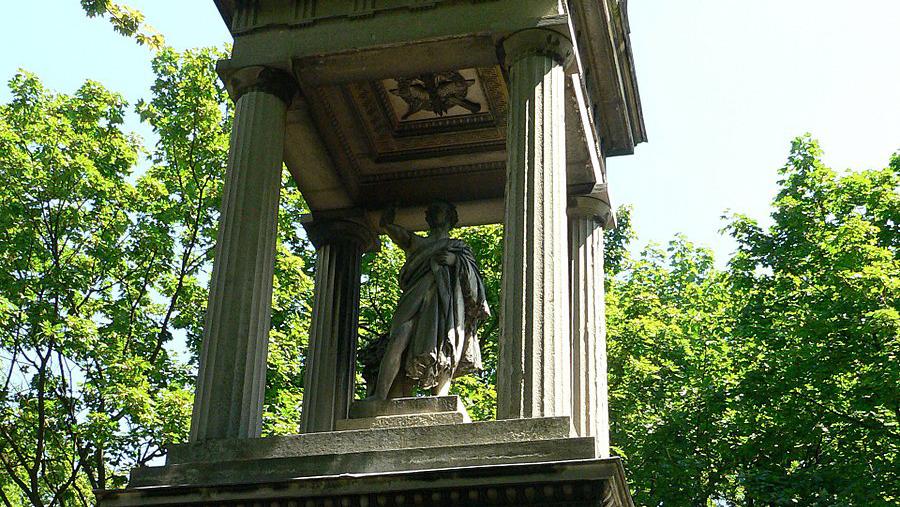Across its history, Père Lachaise has reverberated with political rallies. Intended for the humble residents of western Paris, the cemetery soon became a contested political symbol that would inspire the mass protest—or “manifs—at the center of French political life
Léon Vaudoyer (1803-1872) and David d'Angers (1788-1856), Tomb of General Maximilian Foy, 1831, marble and stone
© Rama
The first installment of this article discussed the novel opportunity for permanent burial that the opening of Père Lachaise provided the middle class in 1804. Marking one’s grave immediately gained importance as an instance of personal expression and marker of status within Parisian society. Stylistic choices communicated the deceased’s political beliefs, religion, and personal accomplishments. Echoing the stark divisions of early nineteenth-century French society, a Gothic flourish and coat of arms might indicate royalist sympathies for its association with Christian tradition, while an austere Roman-style altar placed one squarely in the Bonapartist camp.
Louis-Ernest Pichio (1826–1893), Le Triomphe de l'ordre (The Triumph of Order), 1877, lithograph © Musée d'art et d'histoire, Saint-Denis, Cliché I. Andréani
The Political Funeral Politicization of the cemetery intensified with the social conflicts of the Restoration (1814–1830), a period that opened with the shock of occupying Russian troops bivouacked in the cemetery. At Napoleon’s fall, the united powers of Europe restored the Bourbons to the French throne. Both Louis XVIII and Charles X insisted on royal prerogative, with Charles once declaring…
com.dsi.gazette.Article : 22165
This article is for subscribers only
You still have 85% left to read.
